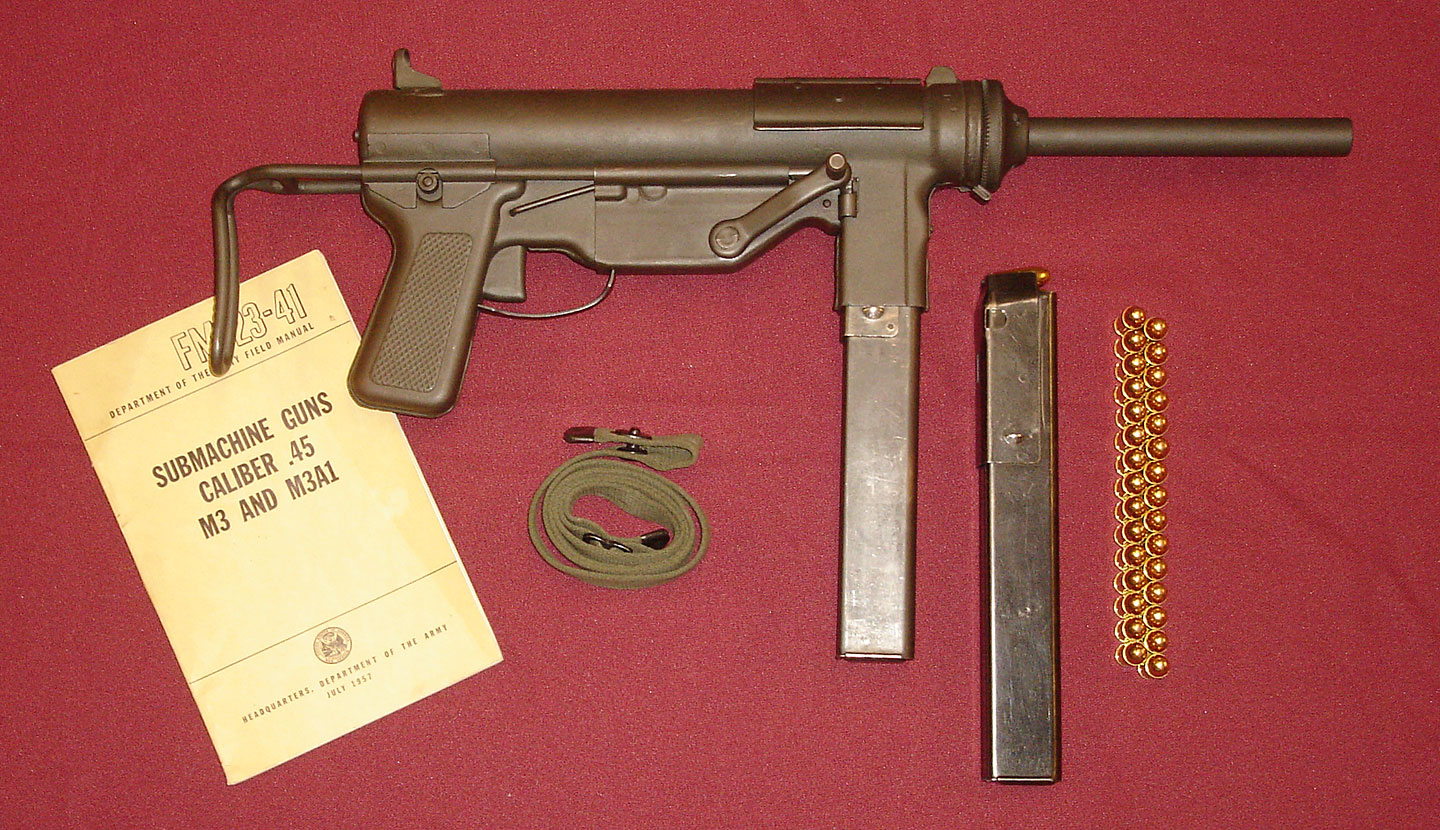 |
| This is great. Until you need a LOT of them |
But it's a funny thing about guns. In peacetime, we love our elaborate, high-quality weapons systems. But when the wolf is at the door, they're suddenly too expensive and too slow to manufacture. We want a whole bunch of guns and we want them NOW. In the early 1940s the Western allies found themselves in such a position. In the UK they feared an iminent German invasion. In the US, fears of imperial Japan were realized at Pearl Harbor. In Canada and Australia they were mobilizing large armies, and they knew they needed to somehow produce enough modern weapons to equip them.
One of the key weapons of the time was the submachine gun. There were no intermediate cartridge assault rifles then, and battle rifles fired a big, powerful round and were incapable of effective, accurate full auto fire. Machine guns were heavy, crew served and unable to maneuver with the platoons on the line. The bridge was the submachine gun - a small, light machine gun firing a pistol cartridge. High levels of firepower over short ranges, it was desirable to have a couple submachine guns in every infantry squad. In other doctrines - notably German and Soviet - a much greater concentration of submachine guns was SOP. So a way to manufacture and deliver a very large number of these weapons in a very short time was a high priority.
What is a gun? At its most basic, it is a bolt, an operating mechanism, a trigger mechanism, a chamber and a barrel, all in some kind of housing with controls for the user. There is a nearly infinite number of ways to design and produce these components, but many of these design decisions are preferences, a more elegant or more aesthetically pleasing way of doing something that could also be done in a cheap, crude manner. Cost and complexity come from machining parts out of solid steel. If you can stamp, or bend, sheet steel and replace some of the more expensive parts, use welds instead of pins and screws, and reduce the use of wood and other aesthetically pleasing 'furniture', you could produce an ugly, functional submachine gun without a special factory for a few dollars.
Unsurprisingly, most governments at the time arrived at a very similar conclusion. But as one of the classic examples of its genre, let me introduce you to the M-3 'Grease Gun', a .45 ACP submachine gun produced at GM's Guide Lamp division in Indiana - a headlight factory.
I suspect you can guess how it came to be called the 'Grease Gun'. Everything is stamped, welded, folded, and bent. Wire stock, welded magazine, a knurled, threaded cap, inspired by plumbing, to retain the removable barrel. Because of all the welded sheet metal, it could be a little fragile. The flip-up dust cover over the ejection port functioned as the safety. It loaded 30 rounds of .45 ACP from a similar welded sheet metal magazine. It was 22 inches long and weighed ten pounds loaded. It was full-auto only, but fired at the relatively slow rate of 450 rounds per minute, allowing an experienced user to squeeze off single shots, or three round bursts. But the main reason for a gun like this is that it is fast, easy and cheap to manufacture. Three quarters of a million were produced, at a cost at the time of less than $20 a copy.
The M-3 was used in all theaters of WW II, and went on to see action in Korea and even Vietnam. And it was part of a long heritage of stubby, ugly, all metal submachine guns that became stalwarts of the world's infantry.
There was the classic British/Canadian STEN:
The infamous German MP-40 'Schmeisser'
And the Russian PPSh-41 'Burp Gun'
We can - and probably will - have endless debates around the relative values of form and function, and we will always be attracted to what we perceive as higher quality goods. But, when the time comes to end the debate and go into production, it is external conditions that will decide what it is we produce. And when one finds oneself staring into the dark abyss, one loses all interest in elegance and luxury, and demands function and quantity. And in those desperate moments, those are all the virtues required.
...




We can - and probably will - have endless debates around the relative values of form and function, and we will always be attracted to what we perceive as higher quality goods.
ReplyDeleteIn the end, even a diet of nothing but potatoes beats the alternative.
P.S. Thanks for the Rusty Wier link!
~